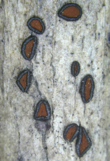In this collection

|
Papers published: 0 Documents added: 5 Printed version: Paperback Unique views: 0 Total views: 0 |
Saprobic fungi, also known as saprophytic fungi, are considered the “key players” in decomposition and essential ecosystem components. They have a cosmopolitan distribution and can occur in almost all environments, such as aquatic, terrestrial, marine, mangroves, and even extreme environments (e.g., deserts). Saprobic fungi have morphologically diverse forms ranging from microscopic structures to large fruiting bodies and species belonging to different taxonomic groups, including Ascomycota, Basidiomycota, and Zygomycota. The fascinating fact is that they can produce a wide range of extracellular enzymes and facilitate the degradation of the lignocellulose layers (e.g., cellulases, hemicellulases, pectinases, phenol oxidases, and polygalacturonases). In addition to their enzymatic capabilities, they also play a crucial role in the carbon cycle by releasing carbon dioxide into the atmosphere and helping enhance soil fertility and overall ecosystem productivity. They are also used for bioremediation, bioprocessing, and many industries, such as food processing and pharmaceuticals. Thus, it is crucial to identify the hidden saprobic fungal diversity to understand their ecological roles and to use them in numerous applications.
The estimated global fungal diversity has changed dramatically, from 100, 000 in the 1940s to 1.5 million in the early 2000s, then 2.8 to 3.8 million in the 2017s, and currently 2.5 million species as the best estimate. However, 155,000 species are currently known; thus, many species are still undescribed and waiting for their discoveries. The possible reasons for the observed discrepancy can be due to fungi being less studied in many countries, host species, regions, and substrates. For instance, the data needed to estimate saprobic fungi accurately is insufficient and incomplete. Therefore, future investigations are required to discover hidden saprobic fungal diversity in unexplored niches, substrates, and hosts with proper identification using morphological characteristics and phylogeny analyses. This will eventually lead us to a realistic estimate of global fungal species. In addition, it is also crucial to investigate their ecological significance and possible applications in various industries.
This research topic welcomes original articles investigating various aspects of saprobic fungal diversity, emphasizing taxonomy, phylogeny, ecology, chemistry, evolution, and potential applications. Effective revisions addressing issues related to fungal classification, genetic diversity, geographical distribution, and their broader impact on the scientific community are also welcome.
